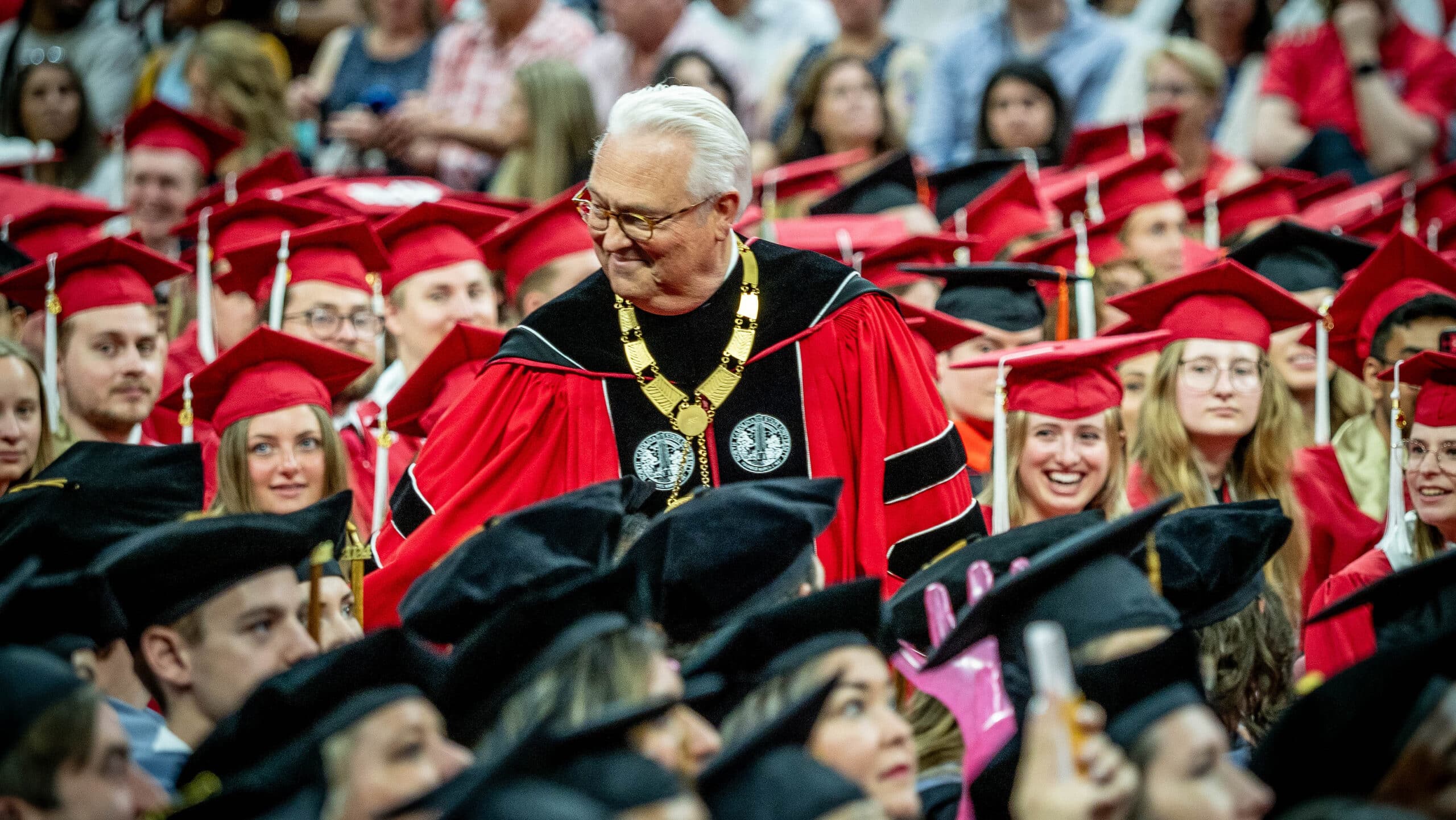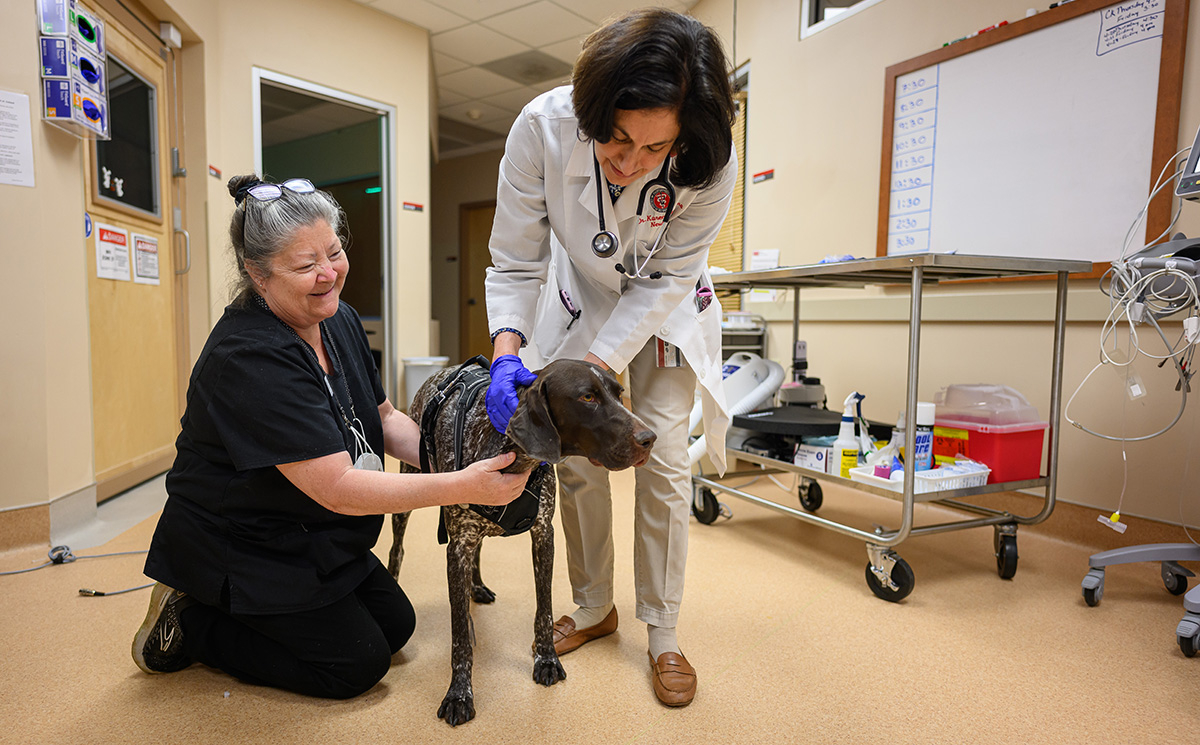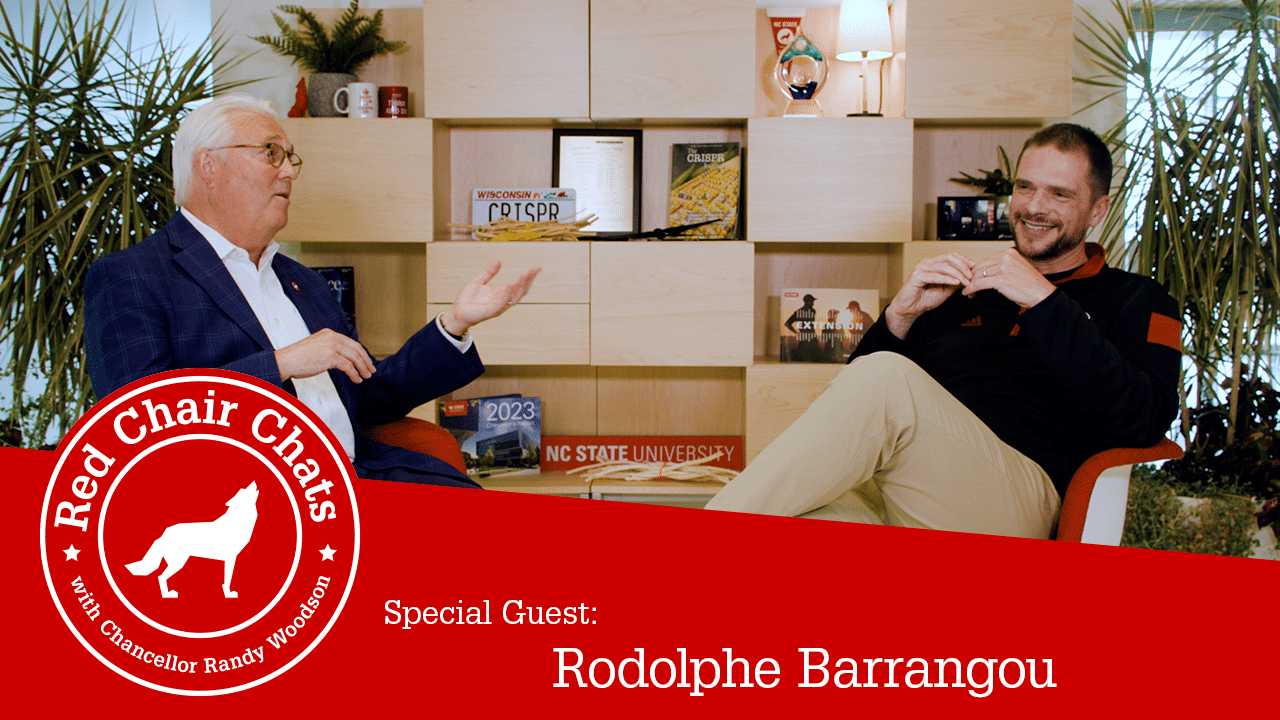Paul’s Cross Scores Digital Humanities Award
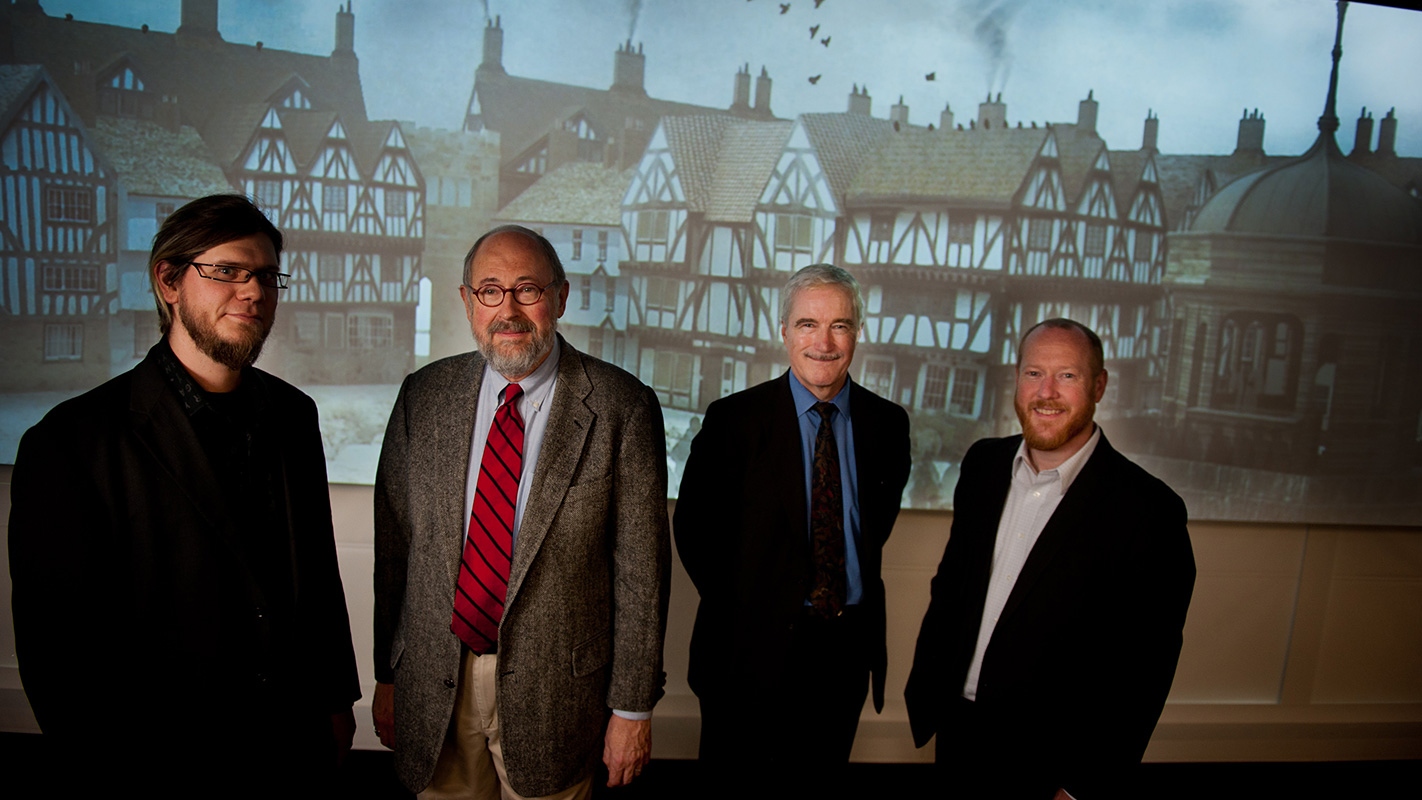
During the Reformation, the open-air pulpit outside Old St. Paul’s Cathedral in London was the scene of radical Protestant preaching and more than one riot. Such was the enthusiasm inspired by some of history’s greatest orators in the shadow of England’s grandest cathedral.
Although the churchyard pulpit, Paul’s Cross, was destroyed in the English Civil War in 1643, it continues to attract a new generation of enthusiasts thanks to NC State’s Virtual Paul’s Cross Project, a multidisciplinary effort to recreate the sights and sounds of the historic churchyard in the digital realm.
The project — drawing on the work of an international team of scholars coordinated by English professor John Wall and architecture professor David Hill — recently won a 2014 Digital Humanities Award for best data visualization, beating eight nominees from leaders in the field, including the University of Pennsylvania, the University of Oxford and Aix-Marseille University.
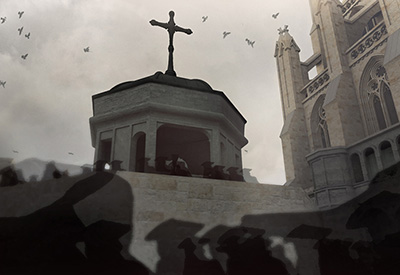
Wall and Hill are thrilled by the reaction to the multimedia project, which can be experienced online at the project’s website as well as in the Teaching and Visualization Lab in the ultramodern Hunt Library on Centennial Campus.
In either setting, visitors can see St. Paul’s churchyard as it looked on Nov. 5, 1622, when poet and cleric John Donne, dean of St. Paul’s Cathedral, delivered his historic Gunpowder Day sermon. They can also hear an actor perform Donne’s sermon — all two hours of it — spoken in the dialect of early modern Londoners.
Teamwork Across Disciplines
A collaboration as big and complex as this one is challenging, the professors note, but well worth the effort.
“My background is in English literature, and my expertise is in interpreting words on a page,” Wall says. “I’m dependent on the expertise of folks like David and the support we’ve received from the research offices in our two colleges to bring together a team of really good people who’ve gotten interested in the project and have been eager to work with us.”
A key collaborator was John Schofield, the cathedral’s archaeologist and author of St. Paul’s Cathedral Before Wren (English Heritage, 2011), who provided the results of his research into the archeological and architectural history of the church.
Sadly, the original cathedral was destroyed in the Great Fire of London in 1666. Although a new St. Paul’s was built on the ashes, Paul’s Cross wasn’t so lucky; architect Christopher Wren made no provision for the structure, and a plaque suffices to mark the site.
It’s little wonder that researchers like Schofield and Wall have been fascinated by the history of Paul’s Cross. After all, this was the place where — as the plaque says — “amid such scenes of good and evil as make up human affairs the conscience of church and nation through five centuries found public utterance.”
Donne’s Gunpowder Day sermon, one of the most famous utterances delivered at the site, was prepared for the project by linguist David Crystal, an expert in early modern English, and performed by actor Ben Crystal.
True to Life
Hill, who supervised the construction of the visual model and the website, says it was challenging to create a look that reflected the dreariness of a November day in 17th-century London.
“Normally we would render something at a time of day when the sun is hitting just right, with good light quality,” he says. “But this scene is on the north side of the church, and the sun doesn’t really shine there. So we weren’t dealing with the contrast of bright light and shadow that provides definition to architectural form, but with almost a full building in shadow.”
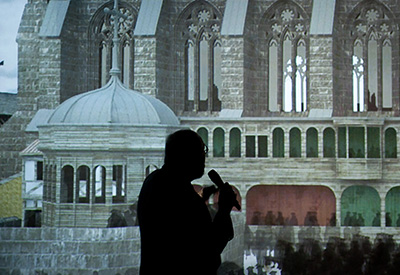
Hill credits graduate student Joshua Stephens for creating the project’s digital model. A fellow student, Jordan Gray, was responsible for giving the model a true-to-life look, complete with the effects of weathering and soot.
“We found out they were burning a particularly acidic, sulfurous form of coal in London at that time,” says Wall. “We innovated visually in this project by integrating lots and lots of information about how the space looked and what the weather was like.”
The most notable innovation, however, is the project’s use of acoustical models to recreate the way the sermon would have sounded from different vantage points in the churchyard. For that expertise they turned to acoustical engineers Ben Markham and Matthew Azevedo at Acentech in Cambridge, Massachusetts.
Recently, Wall and Hill expanded their interdisciplinary team at NC State by joining with Assistant Professor Yun Jing in the College of Engineering to apply for additional project funding from the National Endowment for the Humanities. Jing, who holds a Ph.D. in architectural acoustics, will enable the team to complete their digital model of St Paul’s Cathedral and to recreate worship services held inside the cathedral, including choral and organ music composed by musicians at the cathedral in the early 1600s.
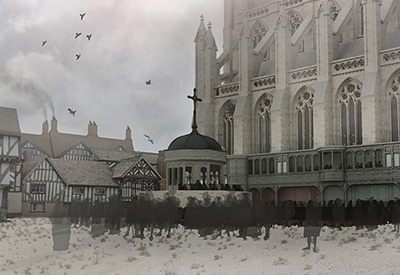
“The informal work of getting interdisciplinary teams together on this campus is not that difficult,” Hill says. “I think you can find somebody on this campus to do just about anything. What’s more difficult, from an academic perspective, is finding a collaborative project that is worthwhile for everybody.”
Student Opportunities
As a pioneering project in the growing field of the digital humanities, Paul’s Cross has a lot to offer, Hill notes, including opportunities to involve bright graduate students.
“I felt that this project really had the potential to attract architecture students and open up their world,” he says. “In architecture we tend to focus on the here and now, but we have plenty of students who are fascinated by architectural history.”
Wall says the digital humanities and projects like Paul’s Cross are breathing new life into traditional areas of study. He’s excited that NC State is at the forefront of the movement.
“The interesting thing is that we can experience past events,” he says. “It’s not time travel; it’s a model. But we can experience an event as it unfolds moment by moment, using our ears as well as our eyes, experiencing a recreation, not just holding a book.”
- Categories:
